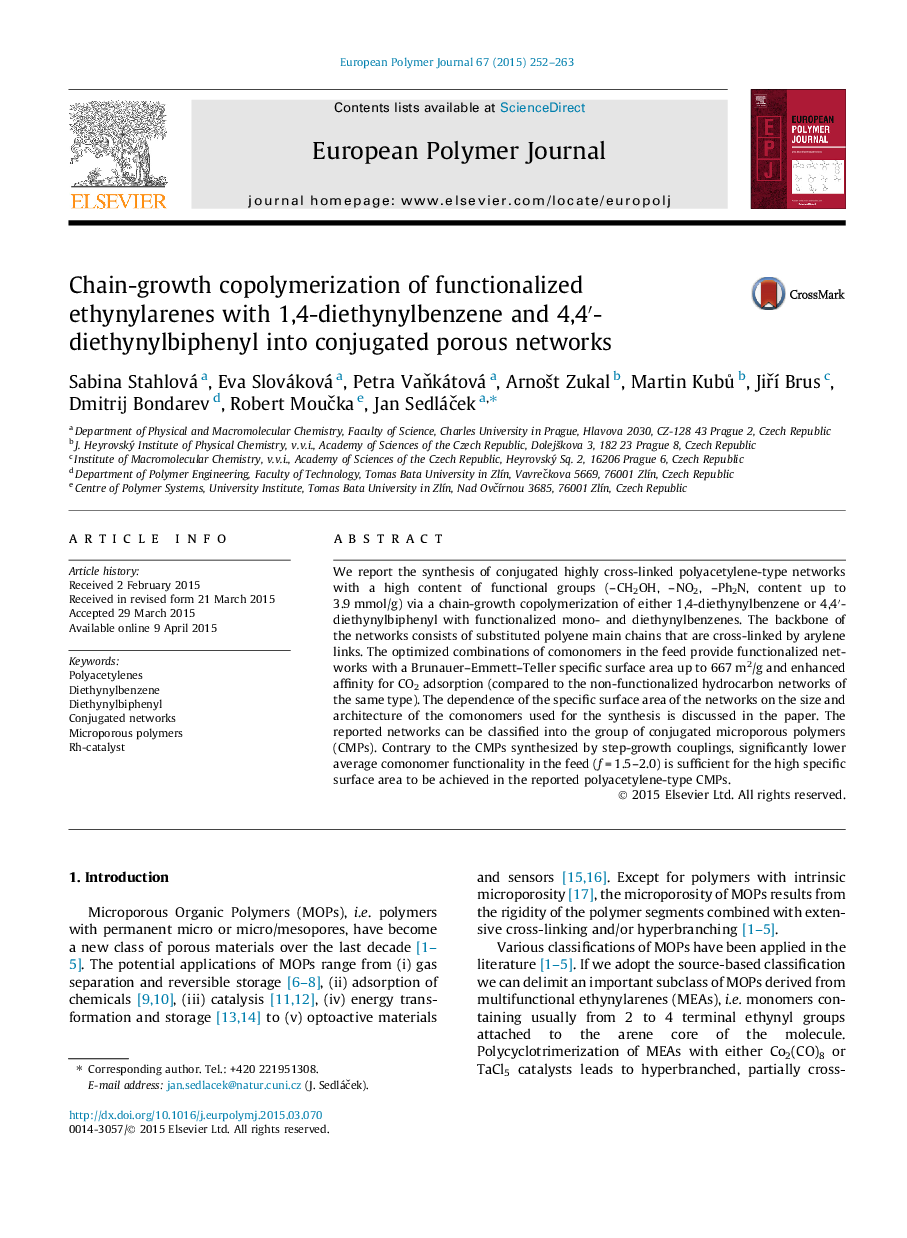| Article ID | Journal | Published Year | Pages | File Type |
|---|---|---|---|---|
| 1400447 | European Polymer Journal | 2015 | 12 Pages |
•Highly functionalized conjugated micro/mesoporous networks were prepared.•The chain-growth copolymerization of substituted ethynylarenes was used.•BET area up to 667 m2/g, content of functional groups up to 3.9 mmol/g is achieved.•Networks with –NO2 and –CH2OH groups exhibit enhanced efficiency in CO2 adsorption.
We report the synthesis of conjugated highly cross-linked polyacetylene-type networks with a high content of functional groups (–CH2OH, –NO2, –Ph2N, content up to 3.9 mmol/g) via a chain-growth copolymerization of either 1,4-diethynylbenzene or 4,4′-diethynylbiphenyl with functionalized mono- and diethynylbenzenes. The backbone of the networks consists of substituted polyene main chains that are cross-linked by arylene links. The optimized combinations of comonomers in the feed provide functionalized networks with a Brunauer–Emmett–Teller specific surface area up to 667 m2/g and enhanced affinity for CO2 adsorption (compared to the non-functionalized hydrocarbon networks of the same type). The dependence of the specific surface area of the networks on the size and architecture of the comonomers used for the synthesis is discussed in the paper. The reported networks can be classified into the group of conjugated microporous polymers (CMPs). Contrary to the CMPs synthesized by step-growth couplings, significantly lower average comonomer functionality in the feed (f = 1.5–2.0) is sufficient for the high specific surface area to be achieved in the reported polyacetylene-type CMPs.
Graphical abstractFigure optionsDownload full-size imageDownload as PowerPoint slide
